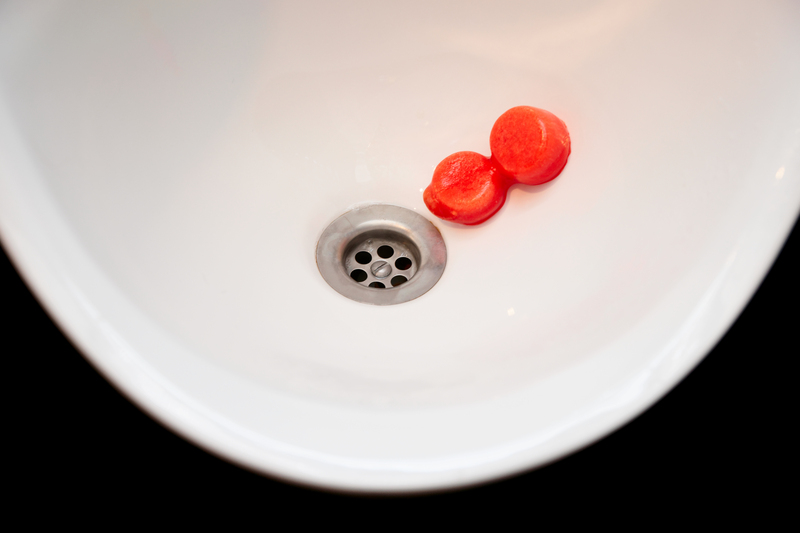A Step-by-Step Approach to Combat Damp Smell Issues
Posted on 07/06/2025
A Step-by-Step Approach to Combat Damp Smell Issues
If you've ever walked into a musty room and noticed an unpleasant, lingering damp smell, you know how pervasive and frustrating this issue can be. Damp or musty odors can transform the comfort of any space into a source of embarrassment and discomfort. Whether the source is a forgotten basement, a poorly ventilated bathroom, or stubborn damp patches on the walls, eliminating damp smells is crucial for your indoor air quality and overall health.
In this comprehensive guide, we'll take you through a step-by-step process to combat damp odor problems, offering actionable tips, practical solutions, and insights for both quick fixes and long-term prevention. Let's reclaim your fresh, inviting indoor environment!

Understanding the Causes of Damp Smells
What Causes Damp Odor in Homes?
Damp smells are typically the result of excess moisture accumulating in specific areas, leading to the growth of mold, mildew, and bacteria. Here are some common causes:
- Poor Ventilation: Rooms without adequate airflow trap humidity, allowing odors to linger.
- Water Leaks: Hidden leaks in plumbing or the roof can create wet patches that decay over time.
- Condensation: Differences in temperature indoors and outdoors can cause moisture to form on walls and windows.
- Rising Damp: Water drawn up through porous building materials introduces persistent moisture.
- Damp Clothing or Carpets: Leftover moisture from laundry or spills can harbor odor-causing mold and bacteria.
Understanding where and why musty odors develop is key to eliminating damp smells effectively.
Step 1: Identify the Source of the Damp Smell
Survey Your Space
Begin your journey to a fresher home by thoroughly inspecting all areas for signs of excessive moisture. Pinpoint the source of the musty smell by:
- Checking for visible mold or mildew on walls, ceilings, and floors.
- Inspecting under sinks, behind appliances, and in hidden corners for signs of leaks.
- Smelling cupboards, closets, and storage spaces for any musty odor.
- Looking for peeling paint, water stains, or warped surfaces.
If you find any damp spots, use a moisture meter to gauge humidity levels. Eliminating the **root cause** rather than just masking the smell is crucial for long-term freshness.
Step 2: Remove the Source of Moisture
Tackle Leaks & Build-Up
The next step is to remove excess moisture and remedy any water ingress issues:
- Fix plumbing leaks: Repair leaking pipes, taps, or joints promptly.
- Address roof and gutter problems: Ensure rainwater is directed away from your property.
- Dry wet materials: Remove and thoroughly dry any wet carpets, clothing, or furniture.
- Increase ventilation: Open windows, use extractor fans, or install vents to encourage airflow.
- Use a dehumidifier: These devices help maintain ideal indoor humidity and combat musty ambiance.
Don't Overlook Difficult Spots
Attics, basements, and crawl spaces are especially prone to damp and musty smells. Regularly check these areas, seal any cracks, and keep them ventilated.
Step 3: Clean and Treat Affected Surfaces
Removing Mold & Mildew: Safe and Effective Techniques
Mold and mildew thrive in damp environments, producing a signature dank scent. To combat damp odors at the source:
- Wear protective gloves, goggles, and a mask before cleaning moldy areas.
- Mix a solution of one part vinegar to one part water or use a commercial anti-mold spray.
- Scrub affected surfaces thoroughly and let them air-dry.
- Repeat on persistent spots and discard any non-salvageable materials.
For fabrics that have absorbed the musty or damp aroma, wash them with a cup of white vinegar in the cycle, then air-dry in sunlight for added freshness.
Don't Forget Hidden Spaces
Behind cabinets, under rugs, and inside cushions--dampness can lurk in hidden areas. Give all nooks a good check!
Step 4: Neutralize Lingering Odors
Natural Deodorizers and Absorbents
With the source eliminated and surfaces clean, the next move is to neutralize any remaining musty scent:
- Place bowls of baking soda or activated charcoal in damp-prone areas for a week.
- Use white vinegar in open dishes to absorb and neutralize stubborn odors.
- Set up coffee grounds in filters--these natural deodorizers soak up unwanted smells.
- Simmer citrus peels and spices to freshen the air without chemicals.
For persistent or severe cases, consider professional ozone treatment or investing in an air purifier to ensure long-lasting freshness.
Step 5: Prevent Future Damp and Musty Odors
Maintaining a Dry, Fresh Environment
- Ensure proper room ventilation: Use extractor fans in bathrooms and kitchens, and regularly open windows.
- Monitor humidity: Keep indoor humidity below 60% with dehumidifiers or absorbers.
- Store items correctly: Keep clothes, linens, and papers in dry, elevated places.
- Regularly clean gutters and downpipes: This avoids water pooling near foundations.
- Insulate and weatherproof: Prevent condensation and cold bridging on external walls.
- Periodically clean potential mold hotspots: Bathrooms, laundry rooms, basements, and kitchens benefit from monthly checks and cleaning.
Adopting these practices ensures your space stays free of the unpleasant odors caused by damp, providing a safe and welcoming environment for all.
Additional Tips for Specific Problem Areas
Combating Damp Smells in Basements
- Seal any cracks in foundation walls to stop water ingress.
- Install a sump pump for persistent or severe groundwater issues.
- Use a basement-specific dehumidifier, especially during wet months.
- Store items on shelving to avoid moisture transfer from concrete floors.
Eliminating Musty Odors in Wardrobes and Closets
- Place moisture absorbers or silica gel packs in corners.
- Leave closet doors ajar to promote airflow.
- Avoid overpacking, which limits ventilation around clothing.
Handling Damp Smells in Fabrics and Upholstery
- Wash removable covers at high temperatures.
- Use a steam cleaner for non-removable upholstery.
- Sprinkle baking soda, leave for a few hours, then vacuum away odors.
Health Risks Associated with Persistent Damp Smells
It's important to note that long-term exposure to damp and musty environments is linked to respiratory issues, allergies, headaches, asthma flare-ups, and a weakened immune system. Mold spores and bacteria can aggravate existing health conditions and create new risks, especially for young children, elderly individuals, and those with respiratory conditions.
That's why prompt intervention and ongoing prevention are so important--not just for comfort, but for your health.

When to Call in the Professionals
Sometimes, despite your best efforts, damp odors remain persistent or are accompanied by significant mold growth and visible damage. In these cases, it's best to call a professional:
- If there is extensive black mold on walls or ceilings.
- Should you spot structural water damage or health symptoms related to damp.
- When DIY steps have failed to eliminate the smell.
- If electrical hazards or hidden leaks are suspected.
Professionals have specialized equipment to locate hidden moisture, remediate hazardous mold, and repair extensive damage, ensuring a complete and lasting solution to damp smell issues.
Fresh, Inviting Spaces Are Within Reach
While fighting damp and musty odors in your home can seem overwhelming, it's absolutely achievable with a structured approach. To recap, always:
- Identify the source of moisture and odors.
- Remove excess moisture and clean thoroughly.
- Neutralize lingering odors with natural deodorizers.
- Implement preventive measures for lasting freshness.
By following this step-by-step guide to eliminating damp smells, you'll ensure your home remains a welcoming, healthy place for everyone. Start today and experience the transformation of your living space!
Related Resources
- How to Eliminate Musty Smells at Home
- EPA Guide to Mold, Moisture, and Your Home
- CDC Mold Clean-Up After Disasters
Say goodbye to musty rooms and restore your peace of mind with a proactive, informed approach to damp smell issues!




